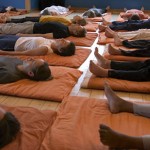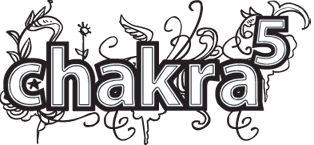Yoga Nidra : The “New”, Softer Side of Yoga
 Back in 1998 or so, I distinctly remember Madonna’s album “Ray of Light” came out. It’s the only Madonna CD I ever purchased. I liked it because William Orbit, one of my musical heroes produced it, and I liked the yogic themes presented in the lyrics.
Back in 1998 or so, I distinctly remember Madonna’s album “Ray of Light” came out. It’s the only Madonna CD I ever purchased. I liked it because William Orbit, one of my musical heroes produced it, and I liked the yogic themes presented in the lyrics.
I think it was also at about this time that Madonna’s ripped body–the result of many hours of vigorous Ashtanga practice–also started making headlines, and thus an entire new craze was born of “Power Yoga”. Many fitness/lifestyle fanatics got pretty obsessed with the physical “Asana” aspect of yoga only, taking their body fat down to single digits in classes that barreled through poses in rapid fire, often in rooms heated to 120 degrees with an instructor barking orders over a headset.
There can be many interpretations of yoga and creative approaches to classes, but the “yoga workout” seems a little outdated now. What about those of us who can’t wear the skimpy shorts, and don’t want to feel like we’re in an Olympic race? What if we prefer to get our heavy cardio from running or biking and are seeking some kind of soothing solace in the yoga classroom, a respite from the beat-down we’re already getting in every day life?
A new trend that’s been happening in yoga over the last few years is a more gentle approach focused on self-healing called Yoga Nidra. It’s a more engaging practice than just meditating or lying passively in Savasana. In Yoga Nidra, you actively take part in a guided relaxation of the body from head to toe.
Sounds easy, huh? Maybe even boring? I challenge you to try it once to experience it in your own unique way. I was skeptical at my first class, thinking it wouldn’t hold my interest for over an hour, and most certainly wouldn’t relax me. The first thing I discovered was how grateful and willing my body seemed to be to embrace the technique. Not only was it fun and very enjoyable, it was so relaxing I could barely keep from falling asleep a dozen times. The trick, essentially, is to bring the body into the deepest state of relaxation while keeping the mind active. This deeply relaxed, very clear state of being is called, “Transcending”, or “The Fourth State”:
“Scientists call what happens during TM practice a fourth state of consciousness, a state of restful alertness, unlike waking, sleeping or dreaming. This fourth state, called Transcendental Consciousness, has it’s own physiological style of functioning—slower breath rate, reduced stress hormones, more orderly brainwaves. We know from hundreds of research studies that experiencing this fourth state of consciousness for twenty minutes twice a day through the TM technique leads to a wide range of health benefits. Scientists around the world have lauded the discovery of this fourth state as a major breakthrough in health and human potential, because experiencing it twice daily appears to be the key to maximizing health and overcoming the ravaging effects of stress.”
–The Fourth State of Consciousness, by Steven Rector, MD
Our instructor guided us through what is called a “body scan”, where we acknowledge and “become aware” of every part of the body, from forehead to little toe. Something about the “roll call” of calling out each part helps the body to settle down. Then we began focusing on breath in different parts of the body while counting backwards silently in our heads. Finally, our instructor guided us through various creative visualizations, like “being the wind on the waves of the sea.”
When class ended, students slowly stood up and walked out, serene smiles on their faces. The sense of being healed and cared for was authentic and palpable, at least in my own psyche.
We have the power to utterly wreck ourselves with anxiety, but we also have the power to turn on an incredible sense of well-being and healing. We don’t need anyone or anything else to tap into this power. Some might say this is mystical or metaphysical–possibly true–but since I come from the scientific angle I’d say it has more to do with balancing the central nervous system and the endocrine system releasing “feel good” hormones. Maybe there really is no distinction. It gets more obvious as more medical research complies: the lines are quite blurred between yoga, breath, meditation and physiology.
Anyway, while anyone could benefit greatly from Yoga Nidra, it’s intriguing to ponder the effects on children or veterans suffering from PTSD. Or … women trying to get pregnant…or people suffering from chronic pain/disease. New medical studies on “relaxation training” are being published every day, with very promising results.
I’ll continue to write about my experience with it as I evolve in the practice; it’s something that surely increases in benefit as you practice it more often over time.
McKenna Rowe is the Founder of Chakra 5 Mobile Yoga, an experienced team of corporate yoga instructors that provides mobile yoga classes on location and by appointment at businesses, schools and organizations throughout greater Los Angeles. Call us to start your corporate wellness program today: 310-853-3885.
